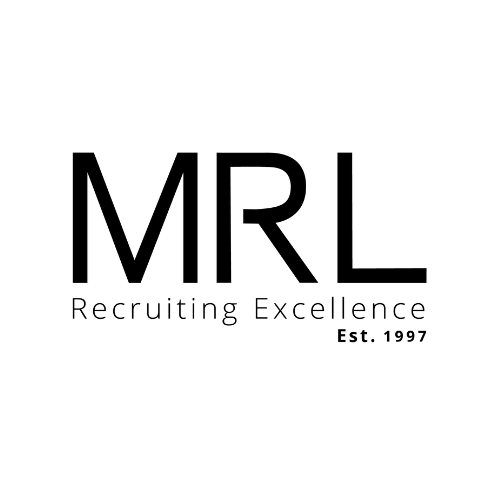How To Write A Job Description
22 Feb, 20215 minutesGet the description wrong, and you run the risk of putting off the candidates you are seekin...

Get the description wrong, and you run the risk of putting off the candidates you are seeking and potentially encouraging less qualified individuals to apply for the role you're advertising.
Why is a job description important?
In addition to being the first impression a candidate gets of your organisation, a job description works as a checklist. Candidates want to learn their chances of application success, ascertain whether the role and organisation will be a good fit for them and their lifestyle and establish expectations. Additionally, it helps your company stand out from your competitors.
Is a job description necessary?
Whether you are hiring internally or externally, a job description is not only a necessary part of the hiring process, it is essential. It outlines what skills, experiences and qualifications you seek in a candidate and allows you to expand your reach and find more people seeking a role like yours.
How do you write a job description?
Every winning job description follows a similar template:
- A short yet descriptive job title
- Expected salary or range
- A summary of the company and the role
- An outline of duties and responsibilities expected from the job
- An overview of qualifications and skills required
- Benefits to be expected
However, there is plenty to be done within this template to help you stand out from the crowd and entice suitable candidates.
A short yet descriptive job title
While this looks to be simple on the surface, plenty can go wrong at this early stage of the description writing process. The title of the job description should be the title the successful candidate will take when they come to work for your company.
Refrain from including informal phrases such as 'guru'. These titles are offputting to many candidates. Rather than emphasising ability, it almost undermines it. Instead, opt for words such as 'executive' or 'senior', highlighting where the candidate will sit on the ladder.
Also, consider how 'findable' the title is. Whether you are advertising on a niche recruitment website or on a page that sits within your site, you need to include words that your target audience will search for to stand a chance of appearing high on the results page.
Expected salary or range
High calibre candidates have high salary expectations. Therefore, any job description that doesn't at least include a potential salary range is exceptionally off-putting. It runs the risk of candidates assuming that the salary will be lower than they can commit to, and therefore, not worth the time and effort involved in applying. It can also make your company appear less than transparent, which reduces the chances of quality candidates applying for a position with you.
It may even result in lower qualified candidates applying for a position, as they can take more of a chance of applying for a role that may end up with a low salary.
In a survey, 92% of job seekers agreed that including the salary in the job description is important. Including a salary or salary range in your job is an easy way to make your company stand out from any competitors who are withholding salary information.
A summary of the company and the role
A job description's main aim is for a potential candidate to ascertain whether they are suitable for the role; therefore, the majority of the description should be giving them this type of information.
However, every job description should begin with a quick summary of your company, including:
- Your mission and values
- Where the role is located (this will also help move your description higher up the search results page)
- Expected working hours
- Details about the working environment
It is also the perfect place to highlight that you are an inclusive company and dedicated to equal opportunities.
The company and role summary should only be a couple of sentences long each, yet needs to hold enough information to grab a candidate's attention and entice them to read more.
An outline of duties and responsibilities expected from the job
This section of the job description should provide the reader with an idea of what they will be doing daily. It should paint a picture and help them understand how their own experiences will be beneficial.
In addition to evidencing expectations from the role, highlight how the job benefits the broader company. How will this position help the company thrive? This will give the candidate a sense of purpose and hint at potential progression routes that may be available.
Remember that candidates will be spending a lot of time perusing job descriptions, so scannability is just as crucial as detail. If it's possible to include a bulleted list within this section, it is recommended.
An overview of qualifications and skills required
This section of the job description will benefit from a bulleted list; however, try not to be too granular. It's essential to weed out any potential candidates who aren't quite suitable for the position; but by listing too many skills and qualification requirements, you may end up listing yourself out of the perfect candidate.
For example, it is common for higher-level job adverts to require minimum years of industry experience. However, by doing this, you may be preventing someone who would be a perfect fit from applying because they fall just shy of the years of experience bracket. The phrase ‘approximately X years of experience’ may be a better option.
If you have a long list of expectations and requirements to be met, we recommend organising these under 'necessary' and 'desirable'. This will still operate to put less-experienced candidates off but not so much that you miss out on high calibre candidates.
Benefits to be expected
Highlighting company benefits is an excellent technique for getting potential candidates 'over the finish line' as it were and enticing them to apply. It may be worth perusing some of your competitor's job descriptions to understand whether your benefits package is sufficient to tempt your preferred candidates.
If you offer benefits surrounding paternity, childcare or even bursaries for further study; include these as they will encourage more candidates from all groups to apply.
How long should job descriptions be?
Remember that candidates seeking a new challenge will be spending a lot of time perusing job descriptions. Rather than aim for a specific word count, look to see how you can provide as much information as briefly as possible.
For example, utilising bullet points and shorter paragraphs will allow for better scannability for first-time-lookers who, once they believe the role to be the right fit, can study the description in more detail; ready to hone their application to suit.
How do you write an inclusive job description?
Without realising it, you may be putting off certain groups based on the language you are using. Even using just one uninclusive word can be enough to put someone off. You'll be able to get a good feel for whether this is a problem you have by looking at your current employees. Is there a noticeable gap?
Before you set your job description live, check for the following to ensure you are appealing to everyone:
- Remove gender-coded words - these don’t need to be ‘he’, or ‘she’, even words like ‘dominate’, ‘rockstar’ or ‘outspoken’ has been proven by studies to be offputting to women and should be removed from your description
- Inclusive copy - You should mention somewhere in your description (we recommend the company summary) that you believe in equal opportunities to encourage anyone qualified to apply
- Steer clear of jargon - This type of language can be a massive barrier as they can easily cause a candidate to feel underqualified for a position. Avoid using acronyms or terms that you would only know if you were associated with the company
- Check company videos or images - Do these favour a particular group of people? If so, you may unintentionally be convincing fantastic candidates not to apply for a position at your company
These simple checks can make all the difference in ensuring a diverse pool of candidates apply for the role you are advertising. If you are unsure, consider speaking to a recruitment consultant experienced in finding the best talent and believes in fair opportunities for all.
With a small amount of additional time, effort, and care, you can increase your job description's visibility, encourage the most qualified candidates to apply, and save time on sifting through applications from less qualified candidates.





